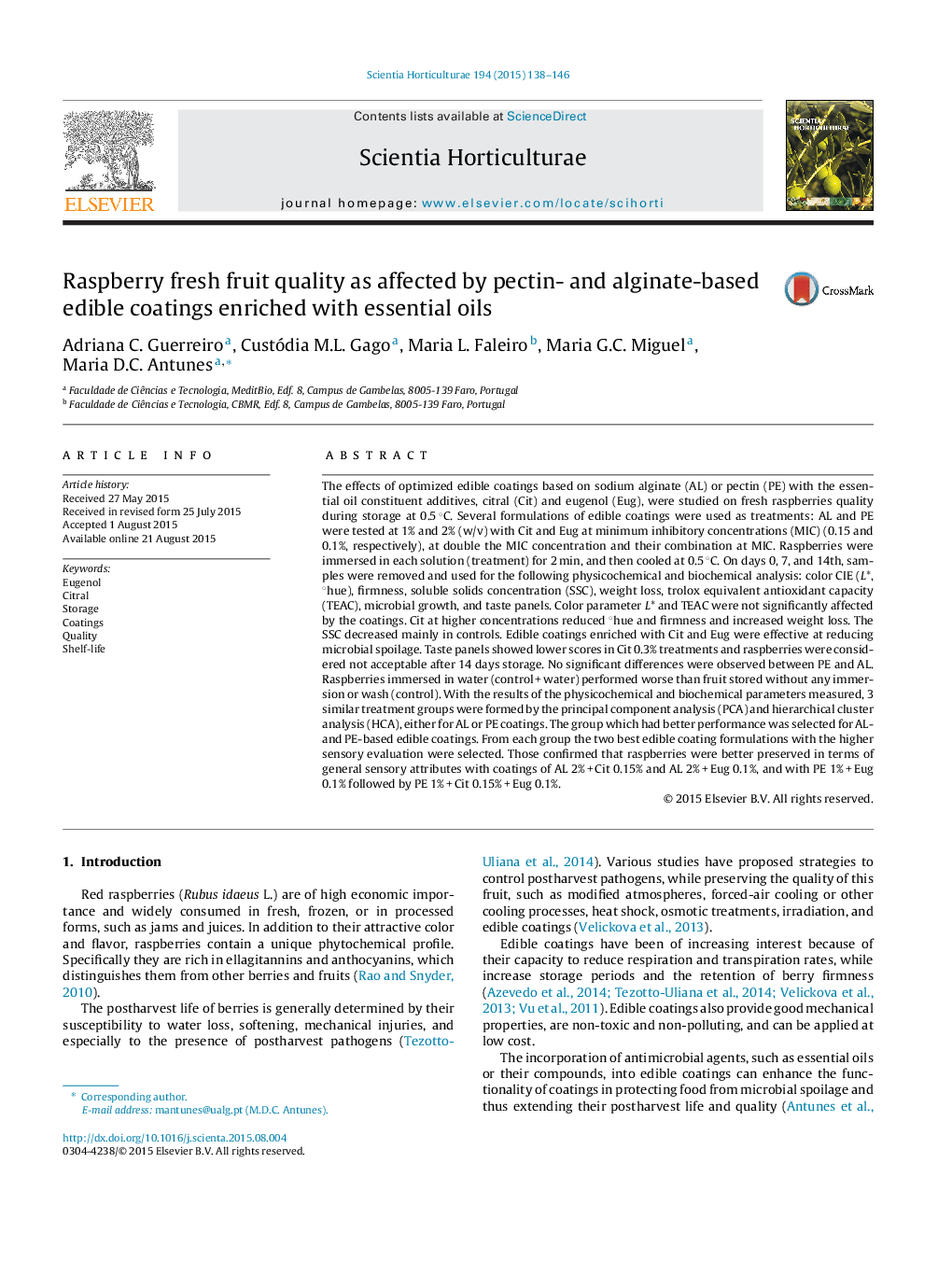| کد مقاله | کد نشریه | سال انتشار | مقاله انگلیسی | نسخه تمام متن |
|---|---|---|---|---|
| 4566325 | 1628804 | 2015 | 9 صفحه PDF | دانلود رایگان |
• Alginate and pectin are good as a base for edible coatings (EC).
• Those EC with citral and eugenol at MIC are suitable for increasing shelf-life of raspberries.
• Edible coatings are effective at preserving raspberry fruit quality and maintain sensory attributes.
• Citral at 0.3% (double MIC) significantly reduced sensory quality.
The effects of optimized edible coatings based on sodium alginate (AL) or pectin (PE) with the essential oil constituent additives, citral (Cit) and eugenol (Eug), were studied on fresh raspberries quality during storage at 0.5 °C. Several formulations of edible coatings were used as treatments: AL and PE were tested at 1% and 2% (w/v) with Cit and Eug at minimum inhibitory concentrations (MIC) (0.15 and 0.1%, respectively), at double the MIC concentration and their combination at MIC. Raspberries were immersed in each solution (treatment) for 2 min, and then cooled at 0.5 °C. On days 0, 7, and 14th, samples were removed and used for the following physicochemical and biochemical analysis: color CIE (L*, °hue), firmness, soluble solids concentration (SSC), weight loss, trolox equivalent antioxidant capacity (TEAC), microbial growth, and taste panels. Color parameter L* and TEAC were not significantly affected by the coatings. Cit at higher concentrations reduced °hue and firmness and increased weight loss. The SSC decreased mainly in controls. Edible coatings enriched with Cit and Eug were effective at reducing microbial spoilage. Taste panels showed lower scores in Cit 0.3% treatments and raspberries were considered not acceptable after 14 days storage. No significant differences were observed between PE and AL. Raspberries immersed in water (control + water) performed worse than fruit stored without any immersion or wash (control). With the results of the physicochemical and biochemical parameters measured, 3 similar treatment groups were formed by the principal component analysis (PCA) and hierarchical cluster analysis (HCA), either for AL or PE coatings. The group which had better performance was selected for AL- and PE-based edible coatings. From each group the two best edible coating formulations with the higher sensory evaluation were selected. Those confirmed that raspberries were better preserved in terms of general sensory attributes with coatings of AL 2% + Cit 0.15% and AL 2% + Eug 0.1%, and with PE 1% + Eug 0.1% followed by PE 1% + Cit 0.15% + Eug 0.1%.
Journal: Scientia Horticulturae - Volume 194, 14 October 2015, Pages 138–146
